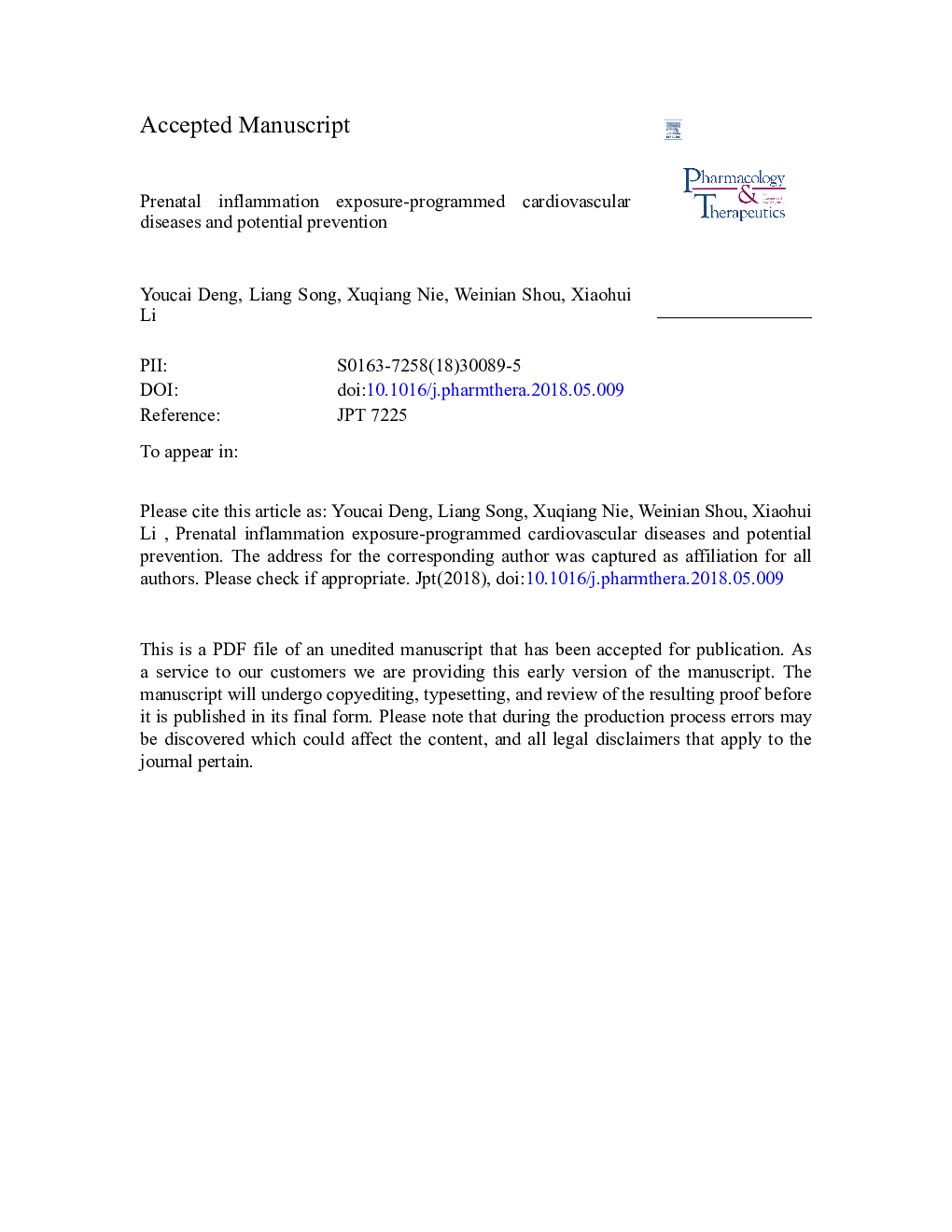| Article ID | Journal | Published Year | Pages | File Type |
|---|---|---|---|---|
| 11019355 | Pharmacology & Therapeutics | 2018 | 63 Pages |
Abstract
In recent years, the rapid development of medical and pharmacological interventions has led to a steady decline in certain noncommunicable chronic diseases (NCDs), such as cancer. However, the overall incidence of cardiovascular diseases (CVDs) has not seemed to decline. CVDs have become even more prevalent in many countries and represent a global health threat and financial burden. An increasing number of epidemiological and experimental studies have demonstrated that maternal insults not only can result in birth defects but also can cause developmental functional defects that contribute to adult NCDs. In the current review, we provide an overview of evidence from both epidemiological investigations and experimental animal studies supporting the concept of developmental reprogramming of adult CVDs in offspring that have experienced prenatal inflammation exposure (PIE) during fetal development (PIE-programmed CVDs), a disease-causing event that has not been effectively controlled. This review describes the epidemiological observations, data from animal models, and related mechanisms for the pathogenesis of PIE-programmed CVDs. In addition, the potential therapeutic interventions of PIE-programmed CVDs are discussed. Finally, we also deliberate the need for future mechanistic studies and biomarker screenings in this important field, which creates a great opportunity to combat the global increase in CVDs by managing the adverse effects of inflammation for prepregnant and pregnant individuals who are at risk for PIE-programmed CVDs.
Keywords
AT2RRASHSDHSVGPCRAVPTLRAT1RPGC-1αDnmtDOCATregHSCsNCDsPDTCDOHaDDevelopmental reprogrammingACTHTNFANG II type 2 receptorNF-κBLPSCRHSAMACECVDsDNA methyltransferaseHRVMAPKROSAngiotensin-converting enzymeAngiotensin IIApoeapolipoprotein EDehydroacetic acidinflammationISOisoproterenolinterferonIFNinterleukinCardiovascular diseasesNoncommunicable diseasesToll-like receptordeoxycorticosterone acetateCNSAng IIDHApyrrolidine dithiocarbamateDevelopmental origins of health and diseaseHuman rhinovirusWorld Health OrganizationRegulatory T cellhematopoietic stem cellsCMVcytomegalovirusRenin–angiotensin systemcentral nervous systemtumor necrosis factormaternal immune activationlipopolysaccharidePVNHPAparaventricular nucleusadrenocorticotropic hormonecorticotropin-releasing hormoneHBVhydroxysteroid dehydrogenasehypothalamic-pituitary-adrenalarginine vasopressinhuman immunodeficiency virusHIVherpes simplex virushepatitis B virusHuman papillomavirusHPVPiemitogen-activated protein kinaseWHOReactive oxygen speciesANG II type 1 receptorPeroxisome proliferator-activated receptor-γ coactivator 1αglucocorticoid receptorG protein-coupled receptor
Related Topics
Health Sciences
Pharmacology, Toxicology and Pharmaceutical Science
Pharmacology
Authors
Youcai Deng, Liang Song, Xuqiang Nie, Weinian Shou, Xiaohui Li,
